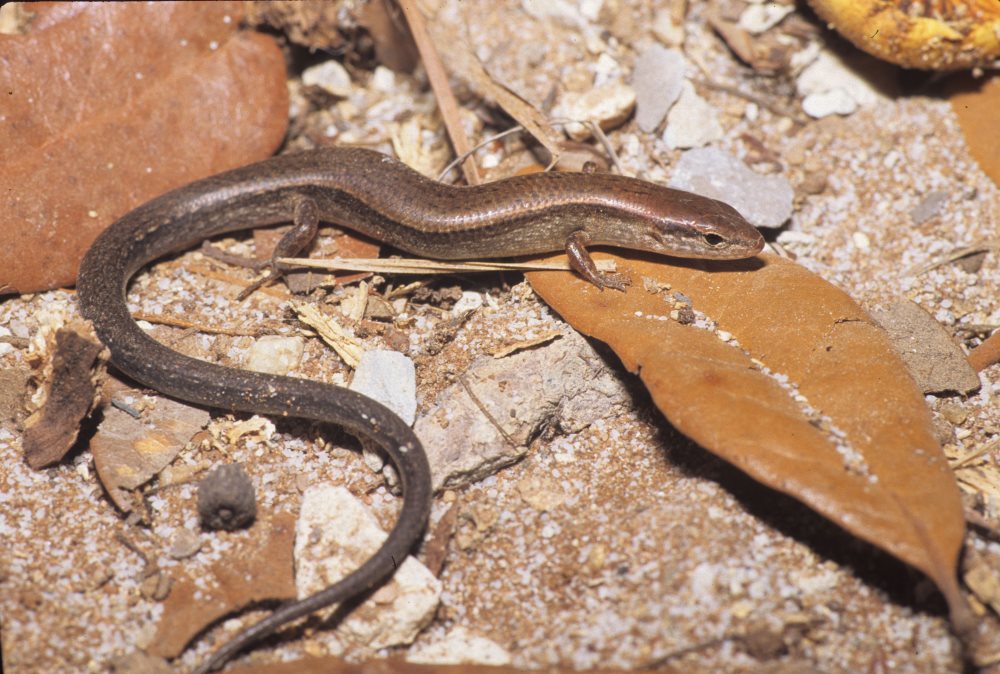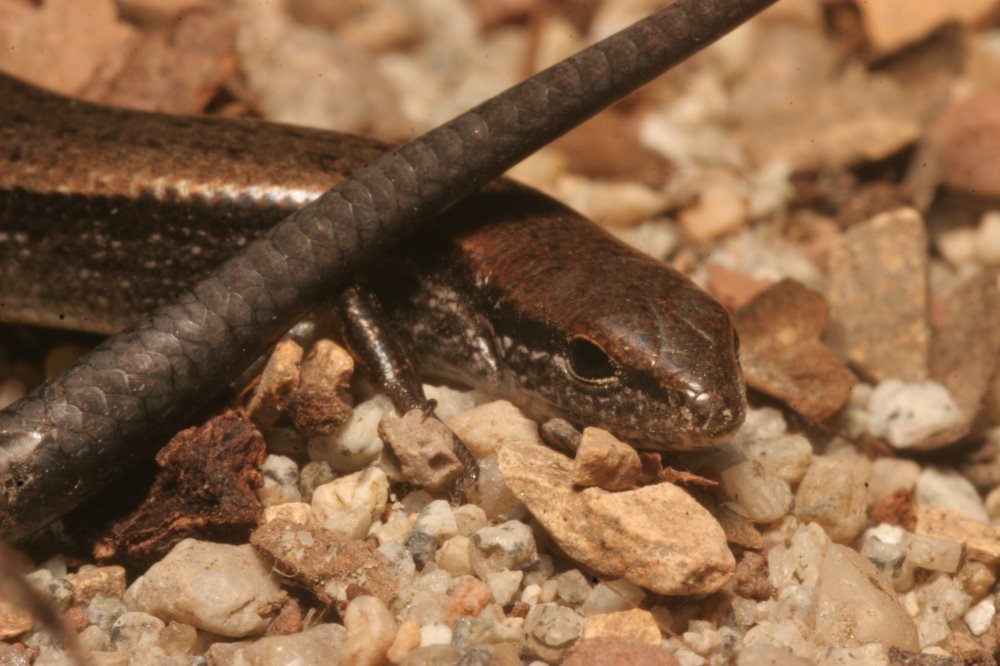
This is a typical, but rather dark Ground Skink, also known as Brown-backed Skink.
Ground Skink,
Scincella lateralis. This tiny, slender (adult at 3 ½ inches including tail) and occasionally to as much as 5 inches) ranges southward from central eastern NJ to the southernmost of the FL Keys and westward to western TX. It was common in yards, open woodlands, grassy lake and pond edges, where in the latter it does not hesitate to take shelter if frightened. Likewise, it can climb agilely but seldom chooses to do so.
At no stage in its life is this species colorful. The 1 ½ inch long hatchlings are of some shades of brown from nose to tailtip. Adults are also some shade of brown, have a dark, and usually well defined, dorsolateral stripe on each side, are lightest dorsally and laterally, and have a cream to yellowish belly. The species has a smooth, transparent spectacle in each lower eyelid, allowing vision even when the eye is closed.
At one time, this skink was easily found and observed throughout its extensive range. Perhaps in some regions this is still the case. Until 6 years ago they were abundant in our north central FL yard. Today (March 2024) marks the 5th year I have seen none. I’ve flipped cardboard, both damp and dry, rolled long-fallen logs, turned plywood and roofing tins, looked by day, dusk, and nighttime, but no Ground Skinks were to be seen.
A few afternoons ago, on an 85F afternoon,100 miles north of home, I was so excited to see a ground skink crossing the pavement I almost went facedown exiting the car to photograph it
Now this tiny lizard assuredly belongs on the “Why Are The Herps Disappearing” list.
Although not seen here, when the eyes are closed a transparent "window" will be seen in each lower eyelid.

Slender, long-tailed, and squirmy---a typical Ground Skink.




